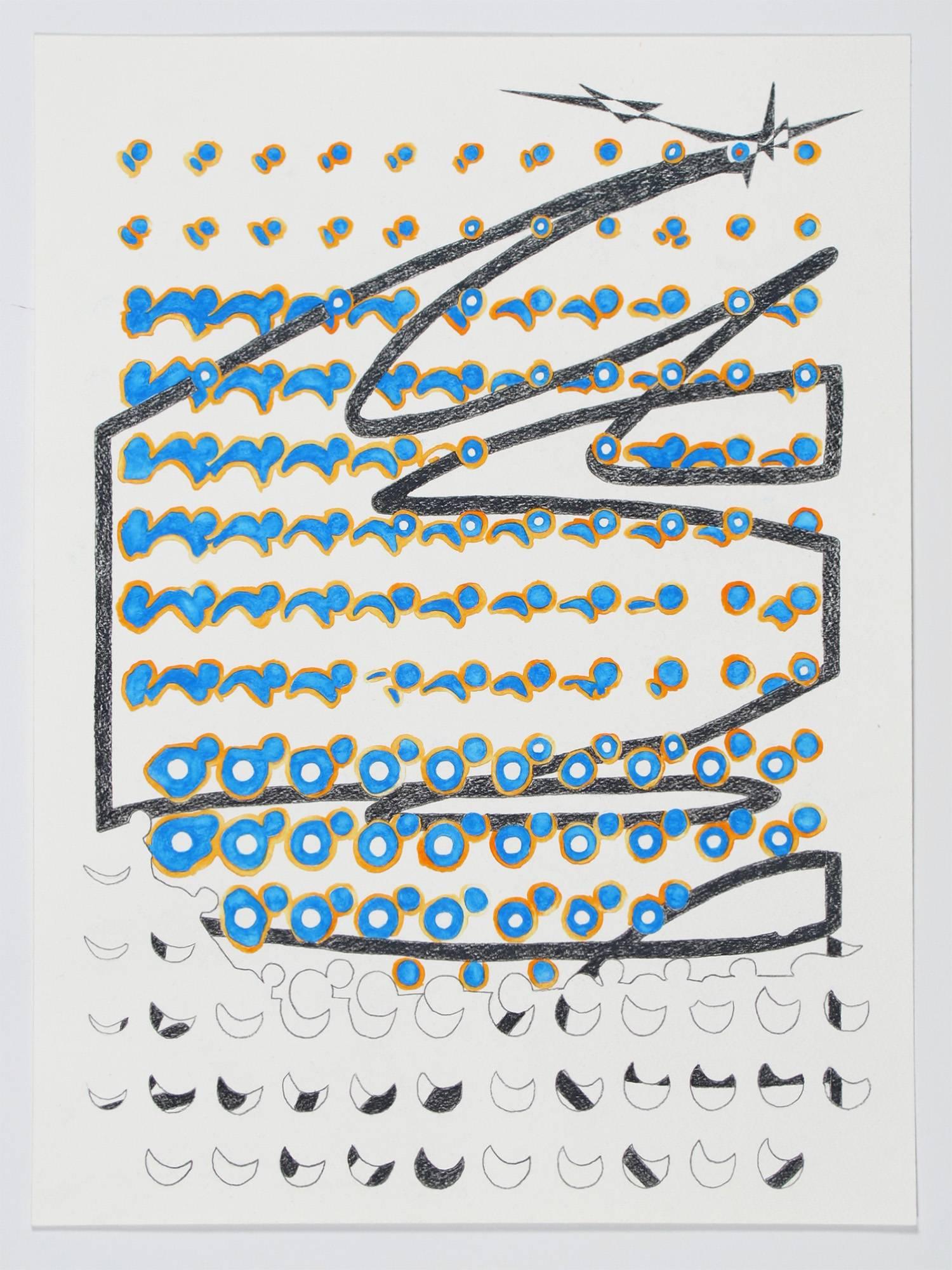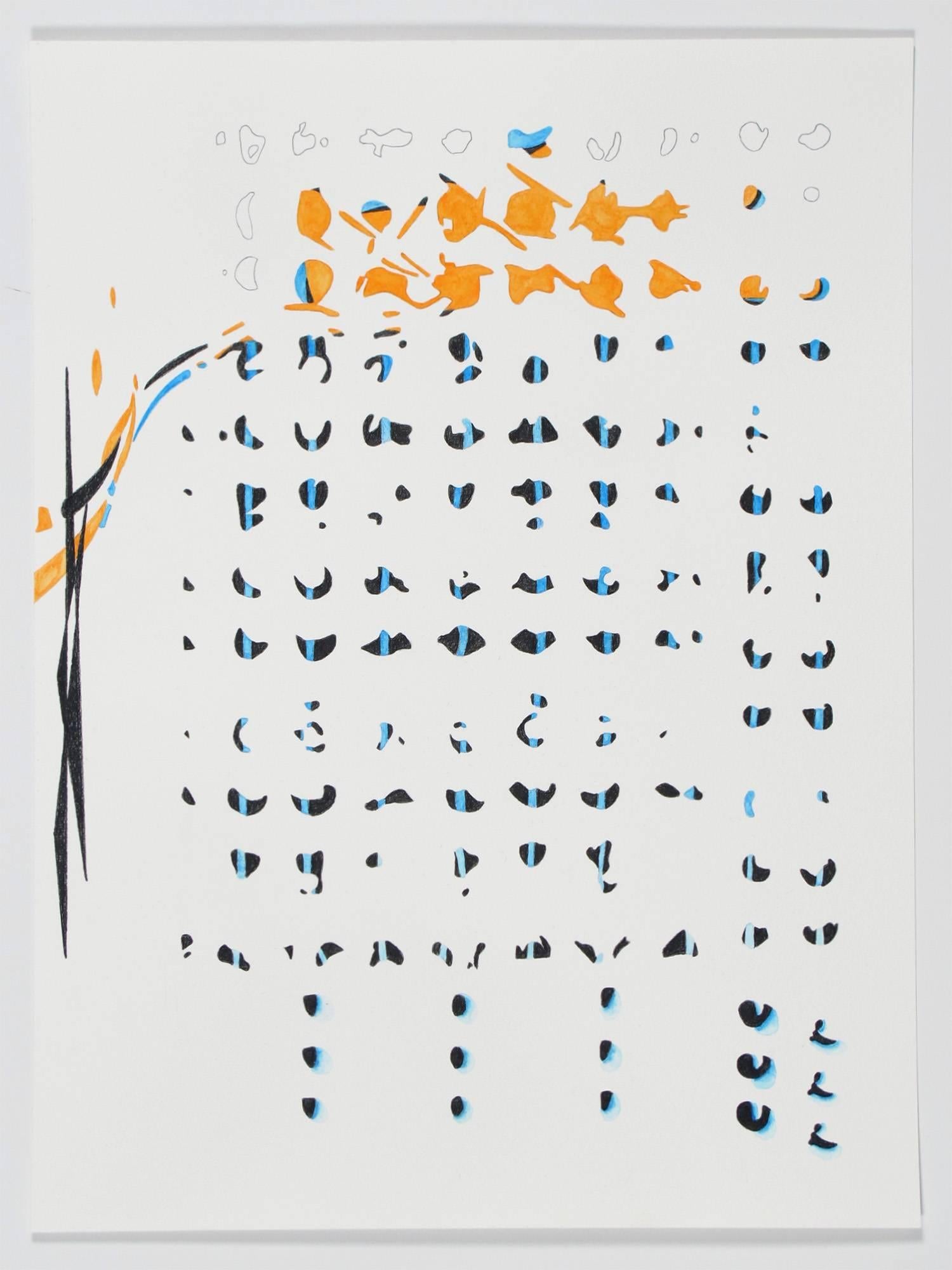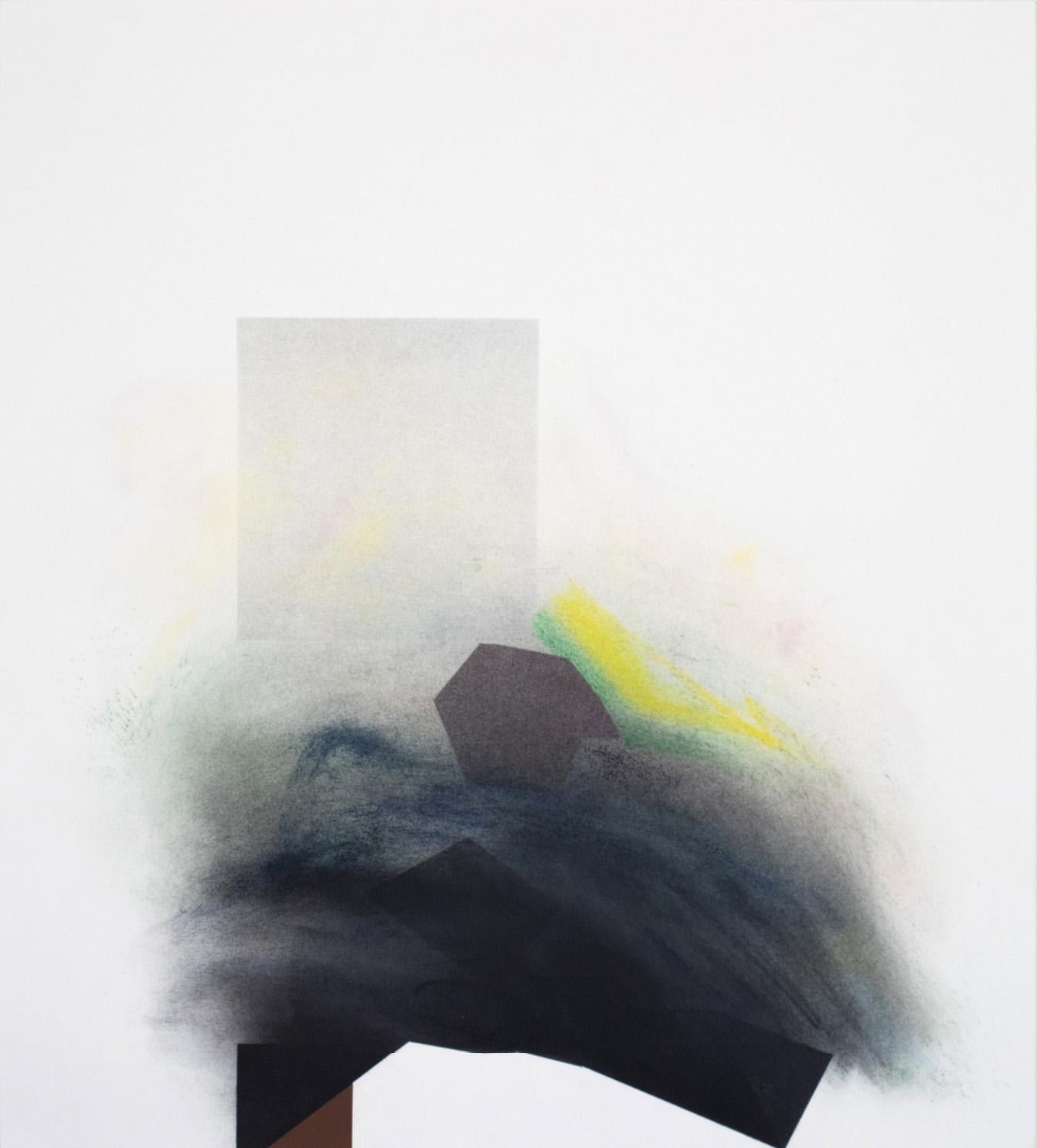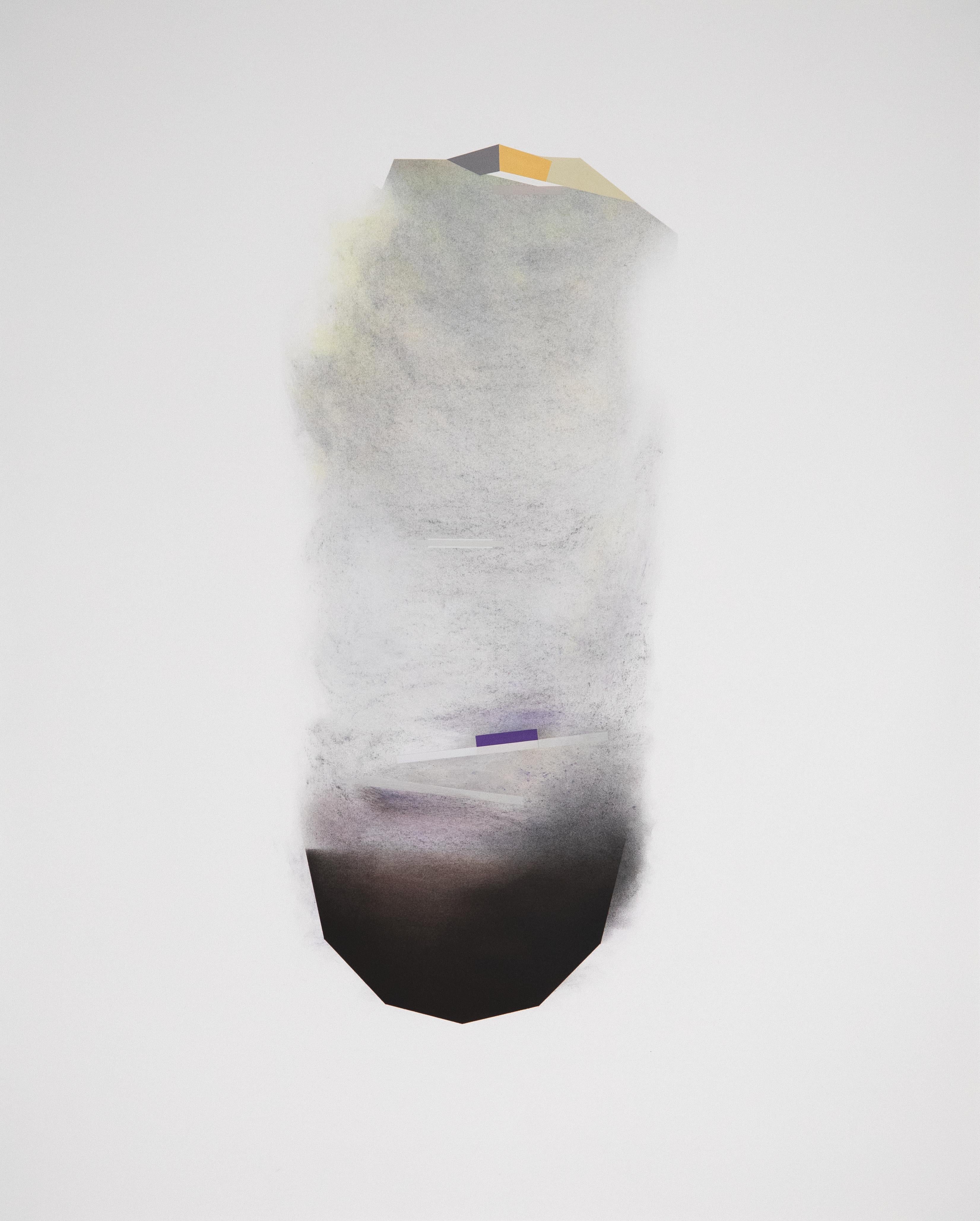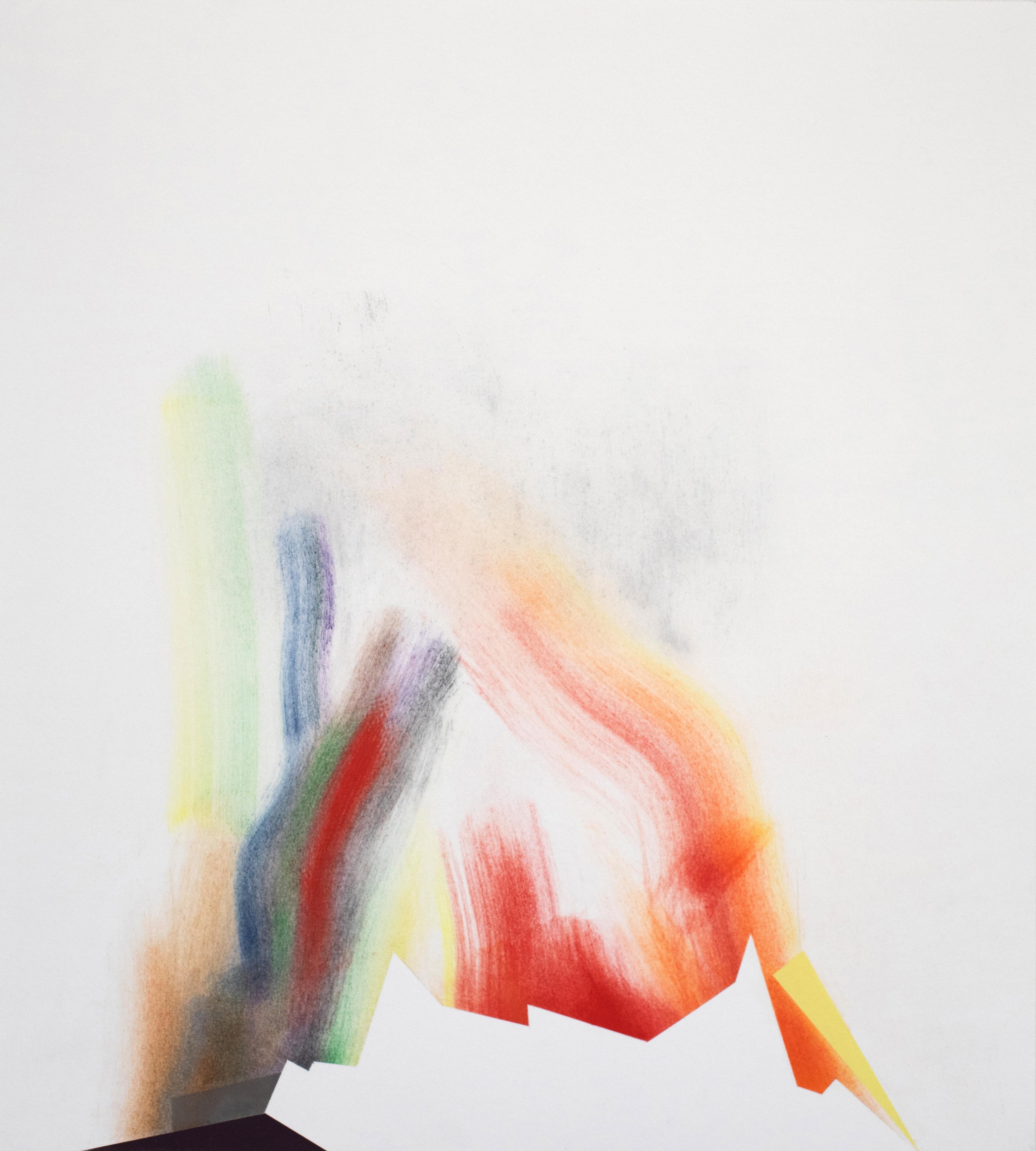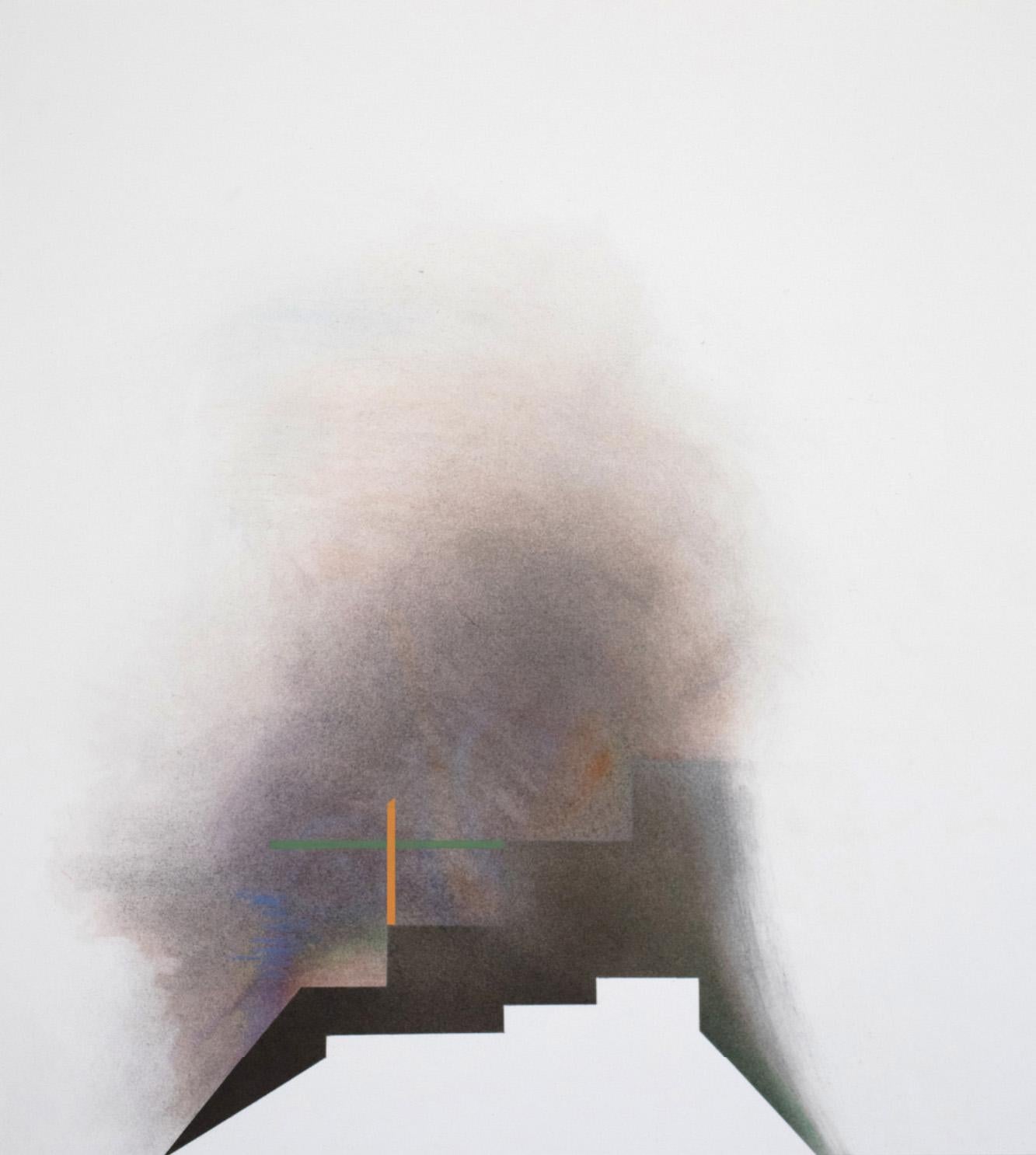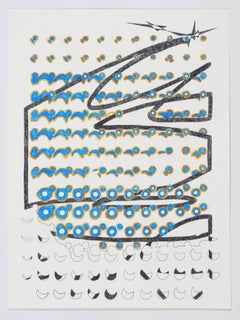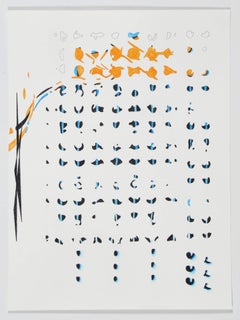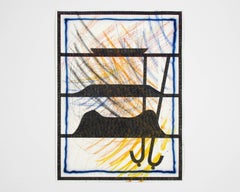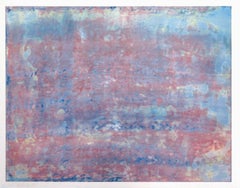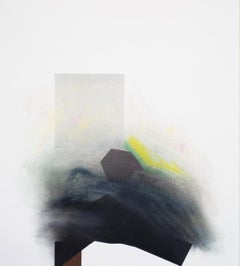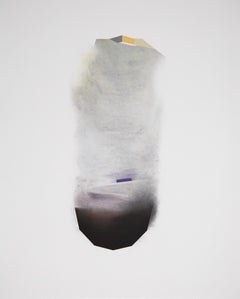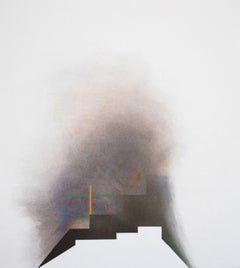Items Similar to Switch-It #19
Want more images or videos?
Request additional images or videos from the seller
1 of 5
Robert RuelloSwitch-It #192016
2016
$1,800
£1,367.14
€1,579.50
CA$2,522.76
A$2,823.45
CHF 1,473.62
MX$34,431.52
NOK 18,860.37
SEK 17,853.76
DKK 11,787.62
Shipping
Retrieving quote...The 1stDibs Promise:
Authenticity Guarantee,
Money-Back Guarantee,
24-Hour Cancellation
About the Item
Robert Ruello
Switch-It #19, 2016
graphite, watercolor, and colored pencil on paper
20 x 15 inches
Energetic and charged with visual power, the Switch-It series is movement and transition visualized. Ruello’s formal investigation of how we move through and disrupt various environments (digital, analog, and in-between) is rendered through these graphic elements. As he notes, “As a result of this disruption, the array is no longer stable or predictable — visual illusions and shifting figure/ground relationships begin to emerge.” Ruello’s work stems from an enjoyment in the tension between the stable and the unpredictable. Though not figural, his work presents elements that are recognizable from our visual vernacular. Digital screens, popular science, and the history of painting, are within Ruello’s investigations between what is real, what is not, and what lies between.
- Creator:Robert Ruello (1958, American)
- Creation Year:2016
- Dimensions:Height: 20 in (50.8 cm)Width: 15 in (38.1 cm)Depth: 0.1 in (2.54 mm)
- Medium:
- Movement & Style:
- Period:
- Condition:this work on paper is sold unframed.
- Gallery Location:Houston, TX
- Reference Number:Seller: RR 2131stDibs: LU4321754833
About the Seller
No Reviews Yet
Recognized Seller
These prestigious sellers are industry leaders and represent the highest echelon for item quality and design.
Established in 1990
1stDibs seller since 2014
Associations
Art Dealers Association of America
- ShippingRetrieving quote...Shipping from: Houston, TX
- Return Policy
Authenticity Guarantee
In the unlikely event there’s an issue with an item’s authenticity, contact us within 1 year for a full refund. DetailsMoney-Back Guarantee
If your item is not as described, is damaged in transit, or does not arrive, contact us within 7 days for a full refund. Details24-Hour Cancellation
You have a 24-hour grace period in which to reconsider your purchase, with no questions asked.Vetted Professional Sellers
Our world-class sellers must adhere to strict standards for service and quality, maintaining the integrity of our listings.Price-Match Guarantee
If you find that a seller listed the same item for a lower price elsewhere, we’ll match it.Trusted Global Delivery
Our best-in-class carrier network provides specialized shipping options worldwide, including custom delivery.More From This Seller
View AllSwitch-It #7
By Robert Ruello
Located in Houston, TX
Robert Ruello
Switch-It #7, 2016
graphite, watercolor, and colored pencil on paper
20 x 15 inches
Energetic and charged with visual power, the Switch-It series is movement and transition visualized. Ruello’s formal investigation of how we move through and disrupt various environments (digital, analog, and in-between) is rendered through these graphic elements. As he notes, “As a result of this disruption, the array is no longer stable or predictable — visual illusions and shifting figure/ground relationships begin to emerge.” Ruello’s work stems from an enjoyment in the tension between the stable and the unpredictable. Though not figural, his work presents elements that are recognizable from our visual vernacular. Digital screens, popular science...
Category
2010s Abstract Abstract Drawings and Watercolors
Materials
Watercolor, Archival Paper, Color Pencil, Graphite
Switch-It #9
By Robert Ruello
Located in Houston, TX
Robert Ruello
Switch-It #9, 2016
graphite, watercolor, and colored pencil on paper
20 x 15 inches
Energetic and charged with visual power, the Switch-It series is movement and transition visualized. Ruello’s formal investigation of how we move through and disrupt various environments (digital, analog, and in-between) is rendered through these graphic elements. As he notes, “As a result of this disruption, the array is no longer stable or predictable — visual illusions and shifting figure/ground relationships begin to emerge.” Ruello’s work stems from an enjoyment in the tension between the stable and the unpredictable. Though not figural, his work presents elements that are recognizable from our visual vernacular. Digital screens, popular science...
Category
2010s Abstract Abstract Drawings and Watercolors
Materials
Watercolor, Archival Paper, Color Pencil, Graphite
More Love Three
Located in Houston, TX
Shaun O’Dell
More Love Three, 2017
gouache and ink on paper
30 x 22 in (76.2 x 55.9 cm)
At once investigations of surface and depth, representation and reality, Shaun O'Dell's newe...
Category
21st Century and Contemporary Abstract Abstract Drawings and Watercolors
Materials
Ink, Gouache, Archival Paper
Untitled
By Gilad Efrat
Located in Houston, TX
Gilad Efrat
Untitled, 2013
oil pastel on paper, 22 1/2 x 28 1/2 in (57.2 x 72.4 cm)
Category
21st Century and Contemporary Abstract Abstract Drawings and Watercolors
Materials
Paper, Oil Pastel
More Love Two
Located in Houston, TX
Shaun O’Dell
More Love Two, 2017
gouache and ink on paper
30 x 22 in (76.2 x 55.9 cm)
At once investigations of surface and depth, representation and reality, Shaun O'Dell's newest...
Category
21st Century and Contemporary Abstract Abstract Drawings and Watercolors
Materials
Ink, Gouache, Archival Paper
Untitled
By Gilad Efrat
Located in Houston, TX
Gilad Efrat
Untitled, 2013
oil pastel on paper, 22 1/2 x 28 1/2 in (57.2 x 72.4 cm)
Category
21st Century and Contemporary Abstract Abstract Drawings and Watercolors
Materials
Paper, Oil Pastel
You May Also Like
Oddballs #7 : contemporary abstract work of art
Located in New York, NY
Drawn from her imagination, Paula Elliott’s modern abstract works of art depict mysterious objects. In her works pastel has become the principal medium combined with charcoal, pencil...
Category
2010s Abstract Abstract Drawings and Watercolors
Materials
Charcoal, Pastel, Pencil
The Thing is Suite 8 #4
Located in New York, NY
Abstract work of art. Charcoal, pencil, pastel, and acrylic on paper.
Category
2010s Abstract Abstract Drawings and Watercolors
Materials
Paper, Charcoal, Pastel, Acrylic, Pencil
Oddballs #6 : contemporary abstract work of art
Located in New York, NY
Drawn from her imagination, Paula Elliott’s modern abstract works of art depict mysterious objects. In her works pastel has become the principal medium combined with charcoal, pencil...
Category
2010s Abstract Drawings and Watercolors
Materials
Pastel, Charcoal, Pencil
Oddballs #5 : contemporary abstract work of art
Located in New York, NY
Drawn from her imagination, Paula Elliott’s modern abstract works of art depict mysterious objects. In her works pastel has become the principal medium combined with charcoal, pencil...
Category
2010s Abstract Abstract Drawings and Watercolors
Materials
Charcoal, Pastel, Pencil
Untitled 9 (Abstract painting)
By Marcy Rosenblat
Located in London, GB
Pigment, silica medium and gouache on paper - Unframed.
Marcy Rosenblat describes herself as having an affinity for process art, a method of art making in which predetermined system...
Category
2010s Abstract Abstract Drawings and Watercolors
Materials
Paper, Gouache, Pigment
Untitled 9 (Abstract painting)
By Marcy Rosenblat
Located in London, GB
Untitled 9 (Abstract painting)
Pigment, silica medium and gouache on paper - Unframed.
Marcy Rosenblat describes herself as having an affinity for process art, a method of art maki...
Category
2010s Abstract Abstract Drawings and Watercolors
Materials
Paper, Gouache, Pigment
More Ways To Browse
Museum Of Modern Art
Museum Exhibit
Framed Photography
One Of A Kind Art
Dior
Paintings Of Paris
Beautiful Paintings
The Vintage Art Gallery
Famous Art
Vintage Lithograph Prints
Vintage Lithographs Prints
Oil On Canvas Landscape Painting
Black Beauty
Framed Acrylic Painting
Paris Art Print
Los Angeles
Textured Paintings
S Hely
